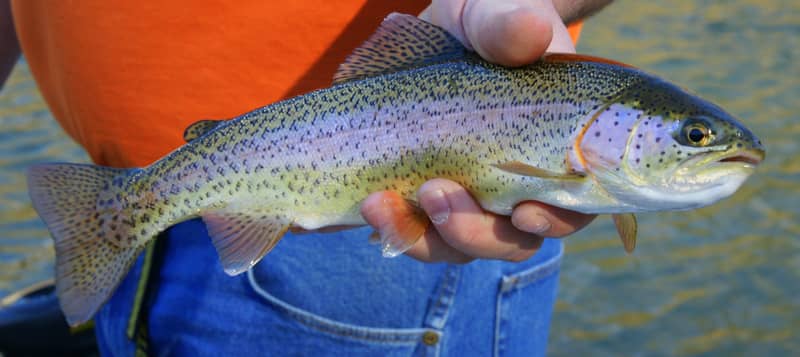Arizona’s “Robot” Fish Help Researchers Study Trout
OutdoorHub Reporters 12.15.14

If you fish Arizona’s East Verde River, you may soon be reeling in some rainbow trout with a little bit more wiring than usual. That is because the Arizona Game and Fish Department will eventually be releasing 35 rainbow trout implanted with lightweight wire tags into the area. These new “robot”—or more accurately, cyborg—fish will be helping researchers analyze the movement of rainbow trout and better understand how they should be stocked.
“It’s a way to kind of estimate the ultimate goal, which is trying to optimize the number of fish to stock while maintaining high catch rates,” Bill Stewart, Game and Fish’s aquatic research program manager, told Cronkite News Online.
The high-tech transmitters are implanted directly into the fish’s belly and cost about $150 each, but on the outside the trout will appear more or less normal, except for an orange tag near its dorsal fin. The fish can even be kept and are safe to eat, save for the mechanical parts. Game and Fish officials are asking that any angler who catches a tagged trout to call the number on the tag and to return the radio transmitter. The agency released another batch of these robot fish earlier this year near the community of Payson, and news of the special fish drew a crowd to the stocking.
“I get phone calls all the time: ‘Did you see the stocking truck today?’” resident Linda Kreimeyer told Game and Fish. “It’s a fun event for families here. Everyone is curious about tagged fish. They want to see these mechanical fish.”
After their release biologists will be following the fish with special receivers tuned to the specific radio frequency of each tagged fish. By tracking these trout, the agency hopes to answer questions such as how long trout live after being stocked, whether they move to a different section of the stream after release, and if they do, whether they head upstream or downstream. The transmitters will also help Game and Fish estimate catch rates.
“We’re getting phenomenal results,” said Arizona Game and Fish Department Fisheries Research Biologist Jessica Gwinn. “And we’re very excited that the angling public is interested in our project and participating with us.”

